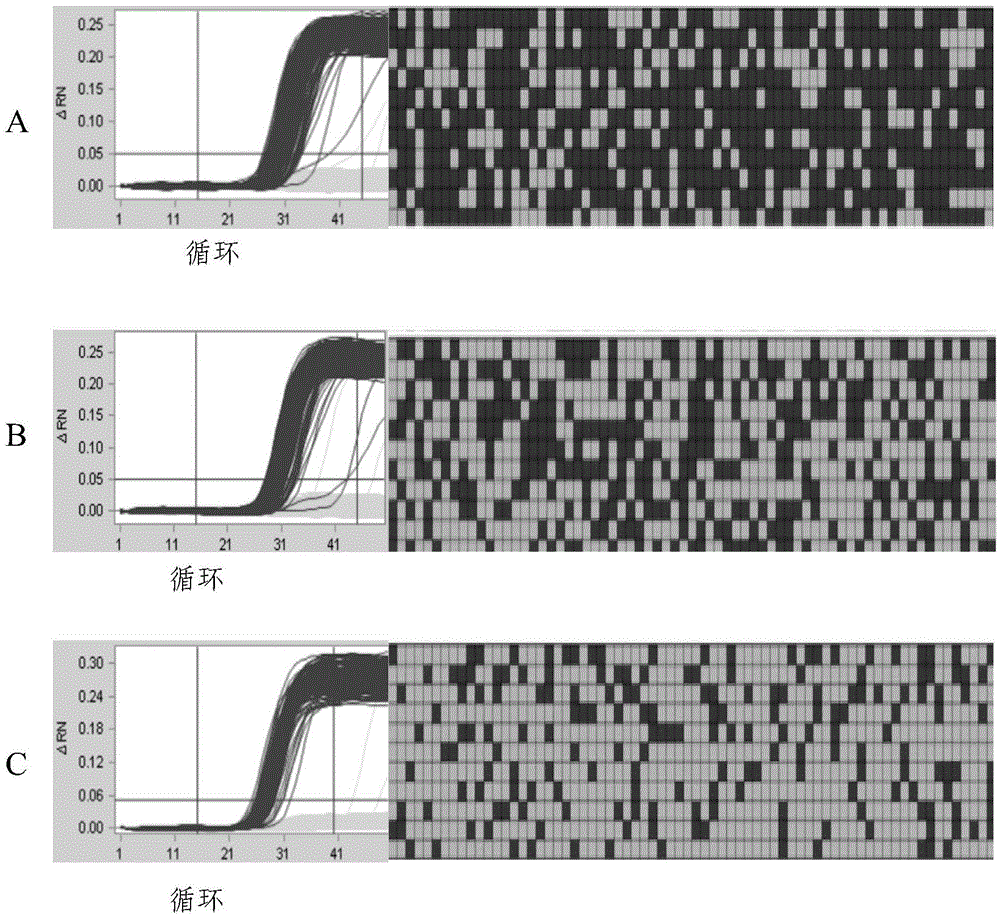Digital PCR (polymerase chain reaction) detection method for transgenic components
A technology of genetically modified components and detection methods, applied in the biological field, can solve the problems of deviation and incompatibility of experimental results, and achieve the effects of accurate detection, great flexibility, and avoidance of adverse effects
- Summary
- Abstract
- Description
- Claims
- Application Information
AI Technical Summary
Problems solved by technology
Method used
Image
Examples
Embodiment 1
[0044] 1. Experimental materials and methods
[0045] 1.1 Experimental materials: The genetically modified corn samples used in this experiment: Bt176 positive samples and MIR162 positive samples, and their respective parental non-transgenic samples are all stored in the Chinese Academy of Inspection and Quarantine. The chip manufacturer is Fluidigm, the model is 48.770 Digital Array Chip, and the instrument is the BioMark system of Fluidigm Company.
[0046] 1.2 Primer design: The primers and probes used in the reaction are shown in Table 1.
[0047] Table 1
[0048] Primer, probe name
Primer, probe sequence (5'-3')
CaMV35s-F
SEQ ID No.1
CaMV35s-R
SEQ ID No.2
CaMV35s-P
SEQ ID No.3
NOS-F
SEQ ID No.4
NOS-R
SEQ ID No.5
NOS-P
SEQ ID No.6
[0049] 1.3 Genome extraction of transgenic crops
[0050] (1) The crop tissue sample is ground and thoroughly air-dried;
[0051] (2) Weigh 100 mg sample wi...
PUM
| Property | Measurement | Unit |
|---|---|---|
| Sensitivity | aaaaa | aaaaa |
Abstract
Description
Claims
Application Information
 Login to View More
Login to View More - R&D
- Intellectual Property
- Life Sciences
- Materials
- Tech Scout
- Unparalleled Data Quality
- Higher Quality Content
- 60% Fewer Hallucinations
Browse by: Latest US Patents, China's latest patents, Technical Efficacy Thesaurus, Application Domain, Technology Topic, Popular Technical Reports.
© 2025 PatSnap. All rights reserved.Legal|Privacy policy|Modern Slavery Act Transparency Statement|Sitemap|About US| Contact US: help@patsnap.com



